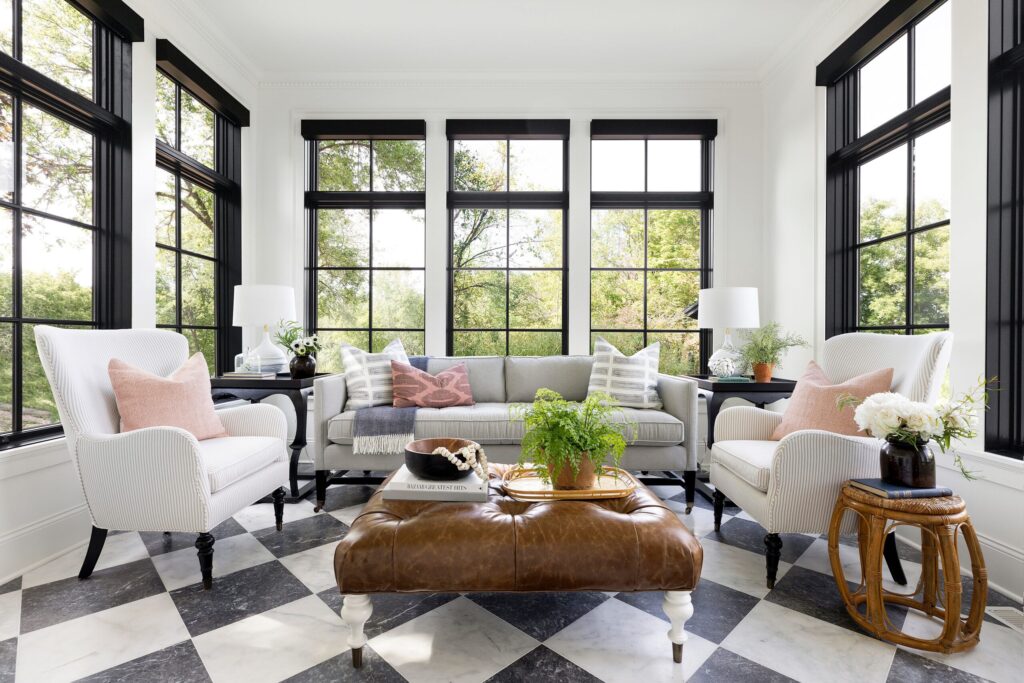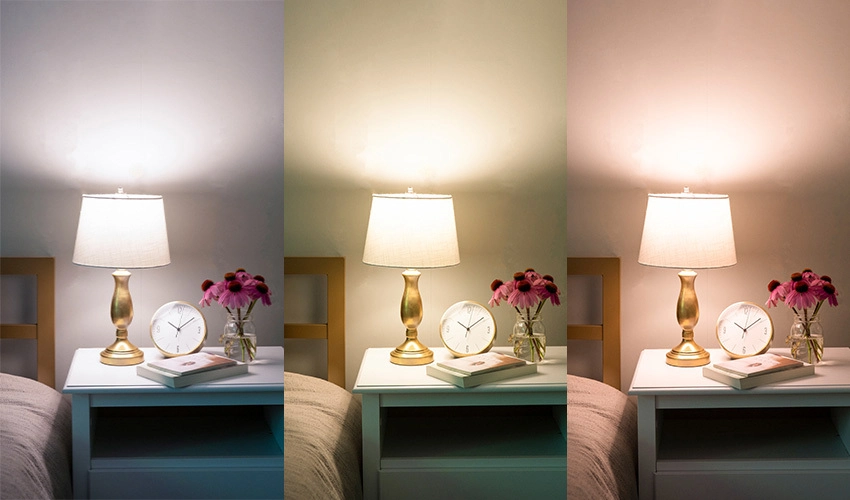Whether you aim to craft a comfy getaway or a space full of energy, picking the right color can be the difference between a good and a great design. In an ocean of options, it’s hard to avoid feeling lost. However, don’t let the abundance of colors overwhelm you because we’re here to show you the way and help you pick the one that will be a perfect match for your sunroom.
The Main Function of Sunrooms
Sunrooms are little miniature sunshine spots in your house and function as a link between outdoors and indoors. They provide a cozy corner where you can enjoy the feeling of sunlight on your skin and appreciate the beauty of your environment without leaving your home. Whether you are a book lover, a plant enthusiast, or sun-worshiper, sunrooms can bring your days to life by being a cozy nook, a green corner, or a place to catch rays.

This space that is easy to use is a great distraction from the daily grind, which can be found as a quiet haven where you can wind down and chill out. The sunrooms with large windows that let in a lot of sunlight are ideal for creating a spacious and welcoming atmosphere, opening up the borders between indoor comfort and outdoor peacefulness. Consequently, whether your sunroom is supposed to bring you peace and tranquility, or is there to invigorate you, think carefully about the best hue for the job.
Points to Ponder When Deciding on a Color
Making a decision on a color for your sunroom involves several factors. First, you need to consider the main purpose of the sunroom. Is it a place where you want to relax, entertain your guests, or even have an office at home? If you want to determine what color is right for you, consider how to use the space to help you choose.
Then, remember the room size and the design. Lighter colors will make tiny spaces look more open and airy. In comparison, darker colors will make relatively larger rooms more comfortable. Think about how natural light goes into the room in different parts of the day too; this can be a factor of how colors look in different light conditions.
Visualize your individuality and your current decor in your home. Would you like the sunroom to melt with the rest of the house or be the one-of-a-kind room that stands out? Considering these elements will help you single out your color options for you and make the look you like.
Tips for the Choice of Color
Deciding the color for your sunroom can be fun and exciting. If you want to make the right choice, look at what mood you want to put in the area. Do you yearn for a cozy place or an energetic venue?
Contemplate the nature that surrounds your sunroom. If the balcony faces lush greenery, natural tones such as sage or terracotta would blend well with the scenery outside. Conversely, if your sunroom overlooks a beach or pool, you could choose the colors of blue or sandy neutral tones to match the water elements.
Consider the role of colors in creating and shaping moods and atmosphere. The warm colors such as yellow and orange evoke joy and energy, but the cold tones like blue and green have a calming effect.
Always try to imagine the shade of paint on the walls of your sunroom before making a decision. Light conditions may change during the day; thus, you might find that the colors may look different in natural sunlight than artificial lighting. Therefore, you have to look at how various shades appear in both conditions to ensure you are satisfied with your choice.
Keep in mind, however, that ultimately, the choice of a color should be yours and the one that best represents your style and how you picture yourself using your sunroom. Follow your gut and do whatever makes you comfortable with the relationship!
One of the most common questions people often ask when considering a sunroom addition to their home is the color.
In the case of the trending sunroom colors, you can be sure that there are a number of options to try out that will only add to the style and ambiance of your space.
Softer pastel shades, such as pale yellow or light blue, have a calming and serene effect, creating a setting for relaxation and winding down after a long day. These colors are the agents that bring feelings of calmness and peace; thus, they are great choices for those who want to build a tranquil haven for themselves in their sunrooms.
On the contrary, as regards the colors one could use, hues such as coral or turquoise bring energy and liveliness to the room, adding a touch of playfulness to the space. These bright colors can be used to promote creativity and encourage cheerful moods. They are, therefore, great options for people who would like their sunroom to be evocative and lively.
Irrespective of the color you finally decide for your sunroom, remember that color compliments the natural light filling the room. If your home faces the north, light colors will help to reflect the sun’s rays nicely. In contrast, darker colors absorb the sunlight and give different effects depending on the time of the day.
In what way are you going to use natural light in your color choice?
Sunroom color selection is another aspect you need to consider, and using natural light when choosing the color is important. The natural light is a big factor in how colors in a room look, so it is necessary to consider this when making a decision.
The choice to use light shades such as soft pastels or whites can help brighten up a room completely lit up with sunlight. This palette mirrors natural light so well that it gives the sunroom that spacious and airy impression when the sun shines. However, if you are into hues like deep blue or green, you should know that they are the colors that absorb more light, so they create a cozy atmosphere.
Think about where your sunroom is located, north-facing rooms tend to get colder light while south-facing rooms get warmer sun. Warm colors such as yellows and oranges will go wonderfully with north facing sunrooms, creating a warm and comfortable atmosphere.
Be creative and try swatches on several walls at different times of the day and observe how different light conditions affect the color scheme before finalizing. This practical approach will help you imagine how the look of every color will be changed under different lighting situations.

When Using Complementary Colors for Furniture and Decor, Remember to Observe the Color Wheel
The choice of sunroom furniture and decor that will go together well should be based on having a harmonious space that echoes your style.
Think about the existing color scheme of the room – whether you’d like to go with something complementary or something different to it. For example, blue tones can be combined with orange hues to make a visually stimulating effect.
By blending different materials and textures, an interior space can acquire a 3D effect. A simple white sofa and wooden features can bring a sense of warmth and interest to the room.
It is okay to break up the neutral tones with splashes of color in the form of cushions, rugs, or paintings. These little extra ornamentations can be the finishing touches to the look you are going for, and they can add a personalized touch to your sunroom.
Keep in mind that natural light is the key factor in how colors look in the room. Try to test out samples at different times of the day to see how they affect the sunlight.
Selecting colors brings joy and excitement into your sunny little haven!

